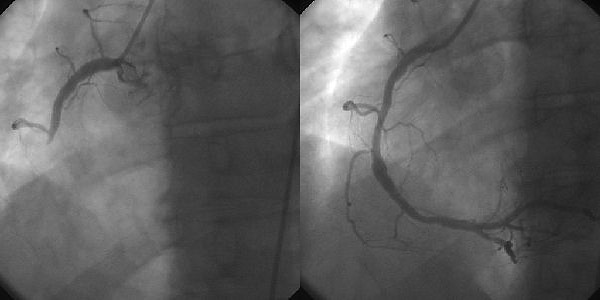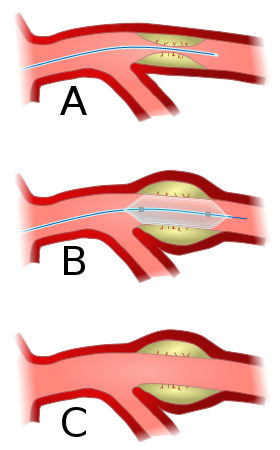Interventional cardiology

Procedures
is an intervention to dilate either arteries or veins.
Percutaneous coronary intervention (PCI/Coronary angioplasty)

Valvuloplasty
It is the dilation of narrowed cardiac valves (usually mitral, aortic, or pulmonary).
Congenital heart defect correction :
Percutaneous approaches can be employed to correct atrial septal and ventricular septal defects, closure of a patent ductus arteriosus, and angioplasty of the great vessels.
Percutaneous valve replacement :
An alternative to open heart surgery, percutaneous valve replacement is the replacement of a heart valve using percutaneous methods. This is performed on the aortic valve (percutaneous aortic valve replacement/TAVI procedure), pulmonary valve and recently the mitral valve
Percutaneous valve repair :
An alternative to open heart surgery, percutaneous valve repair is performed on the mitral valve using the MONARC system or MitraClip system[6]
Coronary thrombectomy :
Coronary thrombectomy involves the removal of a thrombus (blood clot) from the coronary arteries.[7]
Open heart surgery of the heart is performed by a cardiothoracic surgeon. Some interventional cardiology procedures are performed in conjuction with a cardiothoracic surgeon.
